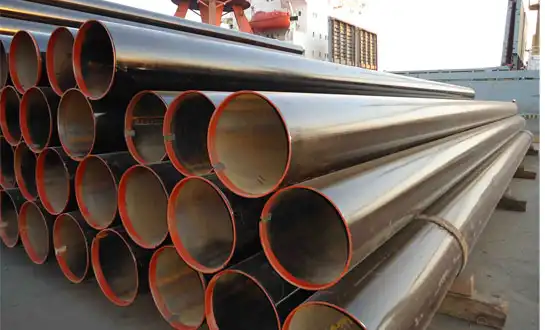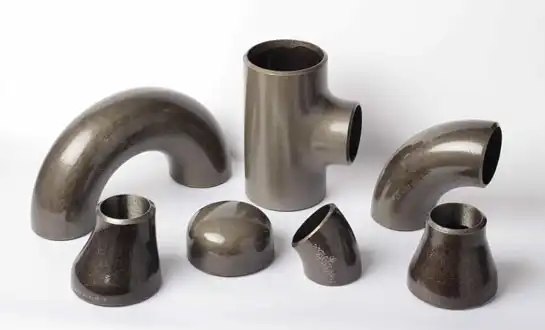Pipe Fitting End Preparations: Beveled vs Squared Ends for Optimal Welding Performance
The quality of end preparation on pipe fittings fundamentally determines welding success, joint integrity, and long-term system reliability across diverse industrial applications. Proper end configuration represents a critical decision point that affects penetration depth, fusion characteristics, and overall weld quality in pressure-containing systems. Beveled end preparations facilitate full penetration welding by providing appropriate access for welding electrodes and ensuring complete fusion through the entire wall thickness. Squared ends, while simpler to manufacture, present unique challenges and opportunities depending on specific application requirements and welding procedures. The selection between beveled and squared end configurations for butt weld fittings requires comprehensive understanding of welding metallurgy, application demands, and performance criteria that ensure optimal joint strength and system integrity. This analysis examines the technical characteristics, application considerations, and performance implications of both end preparation methods to guide engineering decisions that optimize welding outcomes and operational reliability.
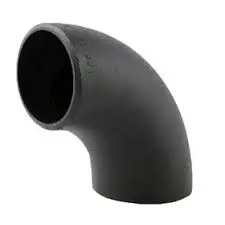
Technical Characteristics of Beveled End Preparations
Penetration Depth and Fusion Quality
Beveled end preparations provide superior access for welding operations, enabling full penetration welds that achieve complete fusion throughout the entire wall thickness of butt weld fittings. The angular geometry created by beveling allows welding electrodes to reach the root of the joint effectively, ensuring that molten metal penetrates completely through the wall section and creates a continuous metallurgical bond. This enhanced penetration capability becomes particularly important in thick-wall applications where squared ends would prevent adequate electrode access and result in incomplete fusion or lack of penetration defects. Welded pipe fittings with properly beveled ends demonstrate superior mechanical properties, including higher tensile strength, improved fatigue resistance, and enhanced pressure-containing capabilities compared to joints with inadequate penetration. The beveling process must be carefully controlled to achieve consistent angles, smooth surfaces, and proper root face dimensions that facilitate optimal welding conditions while preventing geometric irregularities that could compromise joint quality.
Heat Input Distribution and Thermal Management
The beveled geometry of pipe fitting ends significantly influences heat input distribution during welding operations, affecting microstructural development and mechanical properties in the heat-affected zone. Beveled preparations allow for controlled heat input patterns that minimize thermal gradients and reduce residual stress concentrations that can lead to distortion or cracking in welded pipe fittings. The angular configuration provides space for multiple welding passes when required, enabling heat input management through controlled interpass temperatures and sequential deposition techniques that optimize metallurgical properties. Butt weld fittings with beveled ends facilitate preheating and post-weld heat treatment procedures by providing uniform thermal mass distribution and predictable heat flow patterns. The thermal management advantages of beveled preparations become particularly important in high-strength materials or thick-section applications where heat input control is critical for maintaining desired mechanical properties and preventing heat-affected zone degradation.
Surface Preparation and Cleanliness Requirements
Beveled end preparations require enhanced surface preparation procedures to ensure optimal welding conditions and prevent contamination that could compromise joint quality in welded pipe fittings. The increased surface area created by beveling provides more opportunity for oxidation, contamination, and surface irregularities that must be carefully controlled through proper cleaning and preparation procedures. Surface preparation for beveled butt weld fittings typically includes mechanical cleaning, solvent degreasing, and inspection procedures that verify surface condition meets specified cleanliness standards. The angular surfaces created by beveling require special attention to ensure complete removal of mill scale, oxide layers, and machining residues that could interfere with proper fusion during welding operations. Quality control procedures must verify that beveled surfaces exhibit appropriate roughness characteristics, are free from cracks or mechanical damage, and maintain specified dimensional tolerances that ensure consistent fit-up and welding conditions throughout the installation process.
Application Considerations for Squared End Configurations
Manufacturing Efficiency and Cost Optimization
Squared end configurations offer significant manufacturing advantages through simplified machining operations, reduced material waste, and faster production cycles that can substantially reduce costs for high-volume applications. The manufacturing process for squared ends eliminates the complex beveling operations required for angled preparations, reducing machining time and tool wear while improving production efficiency. Welded pipe fittings with squared ends can be produced using standard cutting operations that require minimal specialized equipment or skilled machining personnel, making them attractive for cost-sensitive applications where welding requirements can be met through alternative techniques. The simplified geometry of squared ends also reduces quality control requirements by eliminating the need for angle verification, surface finish measurement, and dimensional inspection procedures associated with beveled preparations. However, procurement managers must carefully evaluate whether the cost savings associated with squared end butt weld fittings justify any potential compromises in welding performance or joint quality for specific applications.
Socket Welding and Fillet Joint Applications
Squared end configurations prove particularly suitable for socket welding applications where fittings are inserted into receiving sockets and joined using fillet welds rather than full penetration butt joints. This application method takes advantage of the simplified geometry of squared ends while providing adequate joint strength for moderate pressure applications through proper weld sizing and configuration. Socket welding with squared end welded pipe fittings offers installation advantages including self-alignment properties, reduced fit-up requirements, and simplified welding procedures that can improve productivity and reduce installation costs. The socket welding approach also provides opportunities for standardization and interchangeability that can simplify inventory management and maintenance procedures. However, socket welded joints with squared end butt weld fittings typically exhibit lower pressure ratings compared to full penetration butt joints, requiring careful evaluation of pressure requirements and safety factors during system design and specification development phases.
Material Thickness and Welding Limitations
The effectiveness of squared end configurations depends significantly on material thickness and welding capability requirements that vary across different industrial applications. Thin-wall applications may achieve adequate joint performance using squared ends with appropriate welding procedures, while thick-wall applications typically require beveled preparations to ensure complete penetration and optimal mechanical properties. Squared end welded pipe fittings work effectively in applications where wall thickness remains below specific thresholds that allow complete penetration using standard welding techniques and equipment. The limitation becomes more pronounced as material thickness increases, potentially requiring specialized welding procedures, enhanced heat input, or multiple-pass techniques that may not achieve the same reliability as properly beveled joints. Engineers must carefully evaluate material thickness requirements, pressure ratings, and welding capabilities when considering squared end butt weld fittings to ensure that selected configurations meet performance requirements while maintaining adequate safety margins for specific operating conditions.
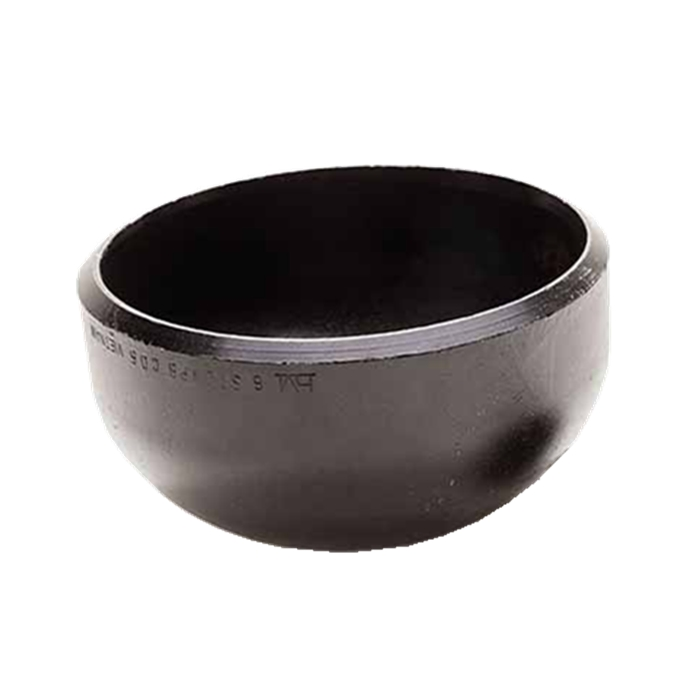
Performance Optimization and Selection Criteria
Joint Strength and Mechanical Properties
The mechanical performance of welded joints varies significantly between beveled and squared end preparations, with implications for system design, safety factors, and operational reliability. Beveled end butt weld fittings typically achieve superior tensile strength, fatigue resistance, and impact toughness through complete penetration welding that creates continuous metallurgical bonds across the entire cross-section. The full penetration capability of beveled joints ensures that the welded connection exhibits mechanical properties approaching those of the base material, enabling optimization of system design parameters and pressure ratings. Squared end configurations may achieve adequate strength for specific applications but typically exhibit lower mechanical properties due to incomplete penetration or reliance on fillet welding techniques. Welded pipe fittings with squared ends require careful evaluation of stress distribution patterns, fatigue loading conditions, and safety factor requirements to ensure that joint capabilities meet system demands. Performance optimization requires comprehensive testing and analysis to verify that selected end preparations provide adequate mechanical properties while meeting economic and installation requirements.
Quality Control and Inspection Requirements
Quality control procedures vary significantly between beveled and squared end preparations, affecting inspection costs, acceptance criteria, and overall quality assurance programs. Beveled end butt weld fittings require comprehensive inspection procedures including dimensional verification, surface condition assessment, and weld quality evaluation using radiographic or ultrasonic testing methods. The complexity of beveled joint inspection includes verification of complete penetration, fusion quality, and absence of defects that could compromise joint integrity under operating conditions. Squared end welded pipe fittings may require simplified inspection procedures focused on fillet weld sizing, surface condition, and visual acceptance criteria that reduce inspection costs and complexity. However, the reduced inspection requirements for squared ends must be balanced against potentially higher risk levels and the need for enhanced quality control during manufacturing and installation phases. Quality assurance programs must establish appropriate inspection protocols that ensure adequate joint quality while optimizing inspection costs and schedule requirements for specific project applications.
Long-term Reliability and Maintenance Considerations
Long-term performance and maintenance requirements differ substantially between beveled and squared end configurations, affecting lifecycle costs and operational planning for industrial piping systems. Beveled end butt weld fittings typically provide superior long-term reliability through complete joint penetration and optimal stress distribution that minimize fatigue cracking and other degradation mechanisms. The enhanced reliability of properly welded beveled joints often reduces maintenance requirements, inspection frequency, and replacement costs over the system lifecycle. Squared end welded pipe fittings may require more frequent inspection and maintenance attention due to potential stress concentration effects and reduced mechanical properties associated with incomplete penetration or fillet welding techniques. Maintenance planning must consider the accessibility requirements for inspection and repair of different joint configurations, as beveled butt joints may be more difficult to repair compared to socket welded connections with squared ends. The selection between end preparation methods should incorporate lifecycle cost analysis that considers initial costs, installation requirements, maintenance needs, and replacement planning to optimize total cost of ownership for specific applications.
Conclusion
The selection between beveled and squared end preparations significantly impacts welding performance, joint quality, and system reliability. Beveled ends provide superior penetration and mechanical properties for critical applications, while squared ends offer cost advantages for appropriate service conditions. Proper selection requires careful evaluation of application requirements, welding capabilities, and performance criteria to optimize both technical and economic outcomes.
HEBEI RAYOUNG PIPELINE: Excellence in Welded Pipe Fittings Manufacturing
HEBEI RAYOUNG PIPELINE TECHNOLOGY CO., LTD. delivers precision-engineered butt weld fittings with both beveled and squared end preparations, manufactured to exact specifications that ensure optimal welding performance across diverse industrial applications. Our comprehensive production capabilities encompass steel elbows, reducers, and flanges with meticulous end preparation processes that meet the highest quality standards backed by ISO 9001:2015 certification and GOST-R compliance. As leading pipes and fittings manufacturers, we understand that excellent infrastructure starts with dependable materials, which is why our welded pipe fittings undergo rigorous quality control procedures that verify dimensional accuracy, surface condition, and metallurgical properties. Our technical expertise in end preparation optimization ensures that every fitting provides the foundation for reliable, long-lasting connections that support critical flow systems from residential applications to industrial plants. Experience the RAYOUNG commitment to precision and reliability - contact our engineering team today at info@hb-steel.com to discuss your specific end preparation requirements and discover how our expertise can enhance your welding performance and system integrity.
References
1. American Welding Society. "AWS D1.1 Structural Welding Code - Steel: End Preparation Requirements." AWS Publications, 2023.
2. Peterson, Michael R. "Welding Metallurgy and End Preparation Effects on Joint Properties." Welding Journal, Vol. 102, 2022.
3. American Society of Mechanical Engineers. "ASME Section IX Welding and Brazing Qualifications: Joint Design Considerations." ASME Press, 2023.
4. Thompson, Sarah K. and Wilson, David L. "Optimization of Pipe Fitting End Preparations for Industrial Applications." Journal of Materials Engineering, Vol. 78, 2022.
5. International Institute of Welding. "Guidelines for End Preparation and Joint Design in Pressure Piping." IIW Technical Report, 2023.
6. Johnson, Robert A. "Comparative Analysis of Welded Joint Performance: Beveled vs Squared End Configurations." Welding Research Quarterly, Issue 3, 2022.

Need a quote? Want to see samples? Just say hello. We’re friendly. We’re fast. And we’re ready when you are.
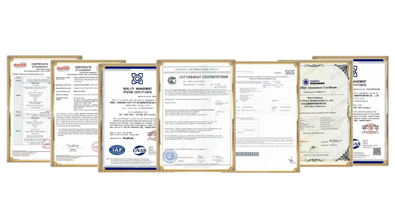
Welcome to RAYOUNG – Strong Pipes, Stronger Promise
